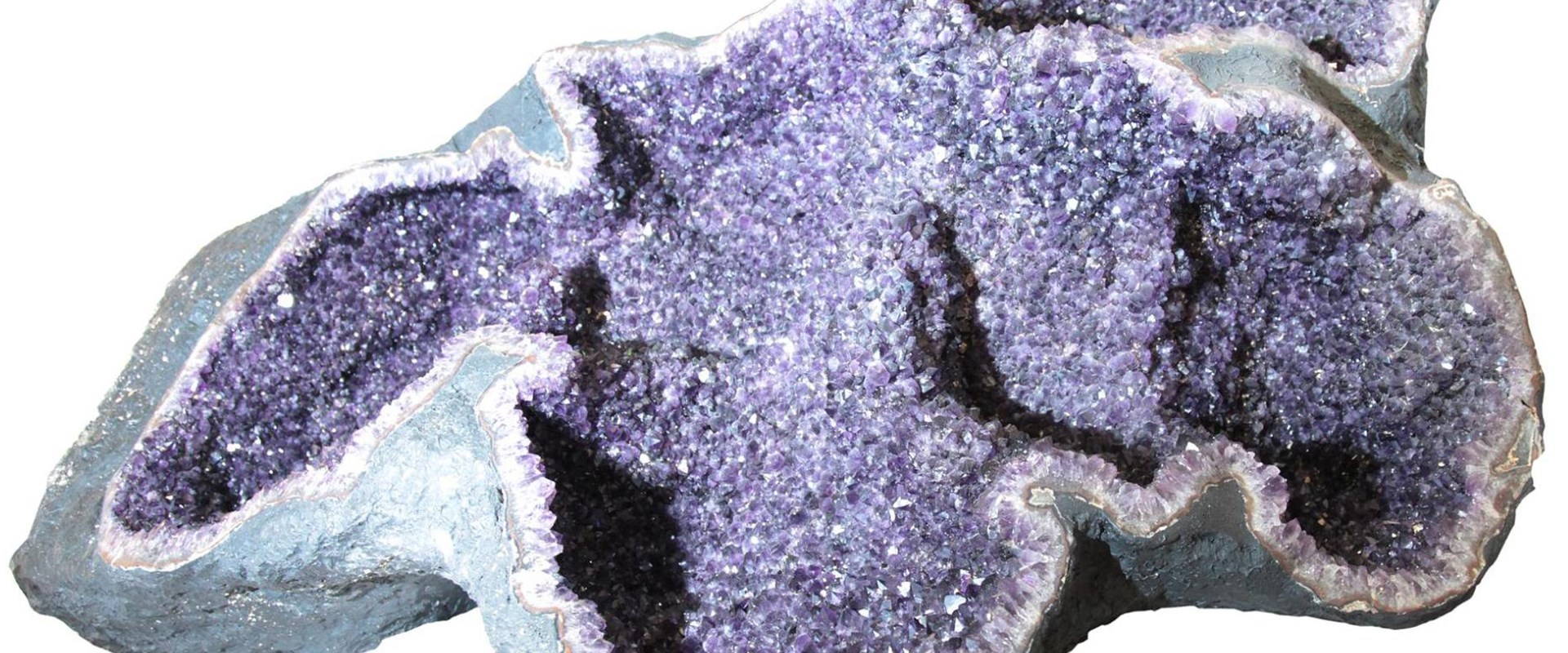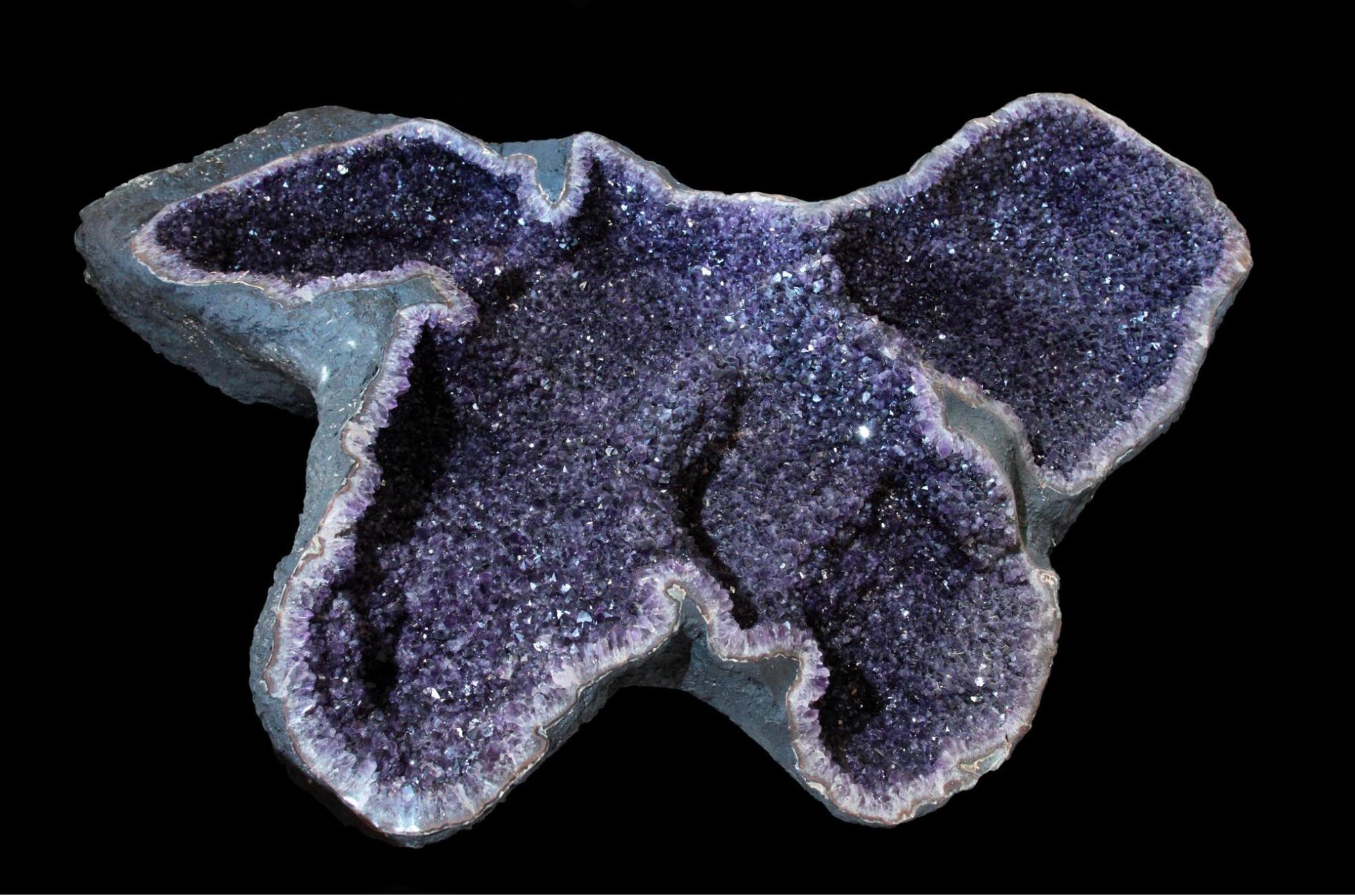Key in a search term below to search our website.
Key in a search term below to search our website.

This huge amethyst geode formed over 130 million years ago in lava during a period of volcanic activity.
Age
130 million years old
Formed in
Rio Grande do Sul, Brazil
Height
1.8m
Weight
1 tonne
Museum reference
On display
Restless Earth, Level 3, National Museum of Scotland
Did you know?
The name amethyst comes from the Greek words for ‘not’ and ‘intoxicated’. The Ancient Greeks believed the stone could protect them from getting drunk!

Geodes are usually no bigger than a fist or even a football, but some can grow to be very large. This geode is almost two metres high and weighs over a tonne! It was excavated from rocks in Southern Brazil near the border with Uruguay.
A geode consists of a cavity lined with crystals. The cavities form from gas bubbles which were trapped in the cooling lava. These gas bubbles can sometimes merge to form quite large cavities. Later, hot mineralised solutions seeped into the cavities and deposited crystals.
The crystals in our geode are made from quartz. The purple variety of quartz is called amethyst. The colour is caused by tiny impurities of iron which are then altered by natural radiation to give the purple colour.
Amethyst, like all varieties of quartz, is very hard and is used in jewellery. Here are a few amethyst highlights from our collections.